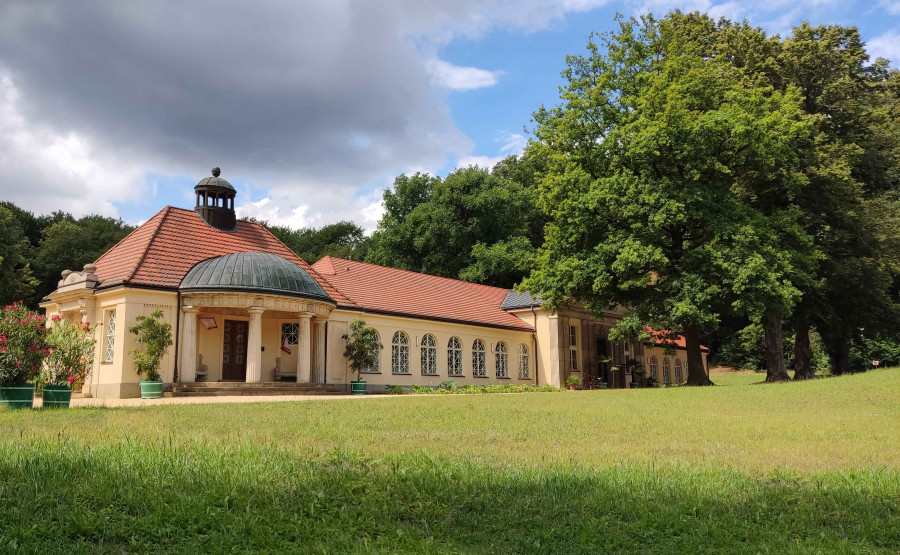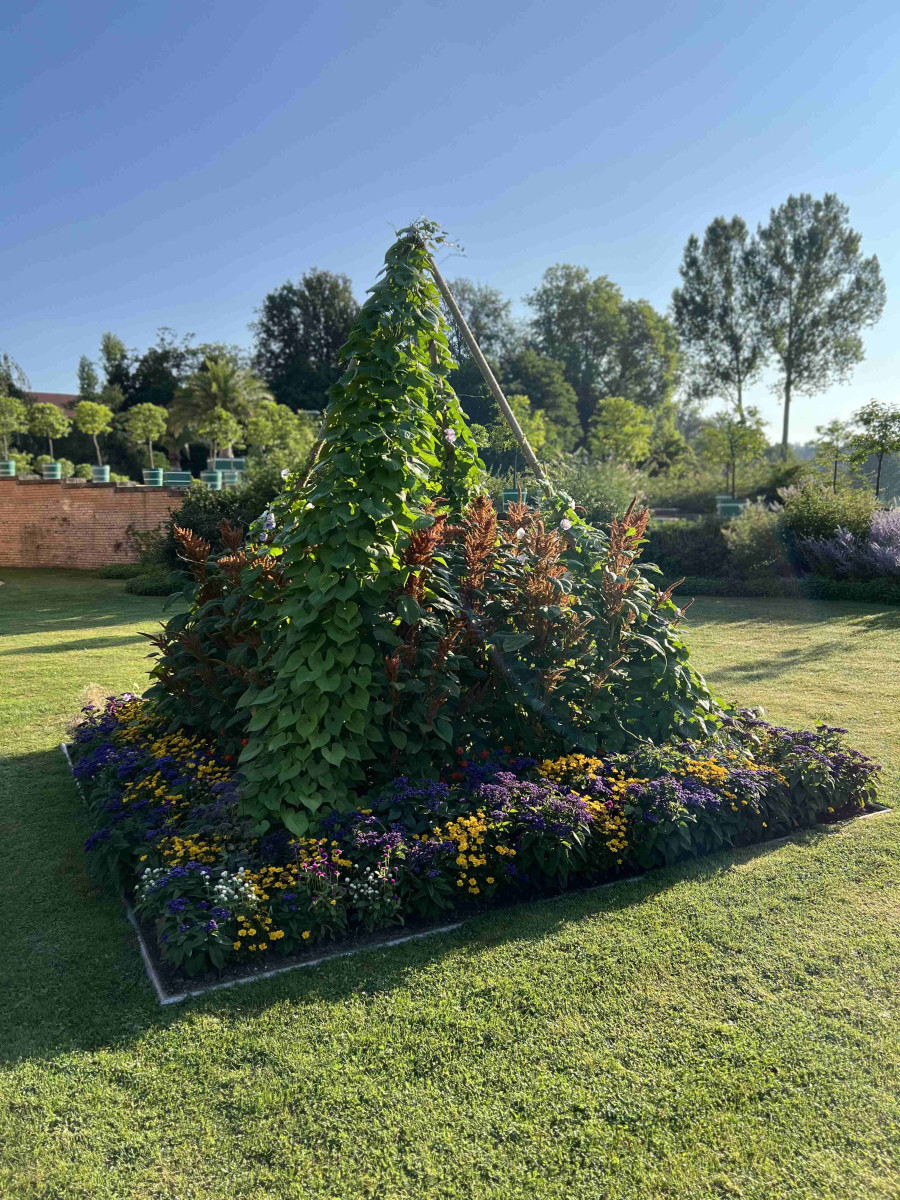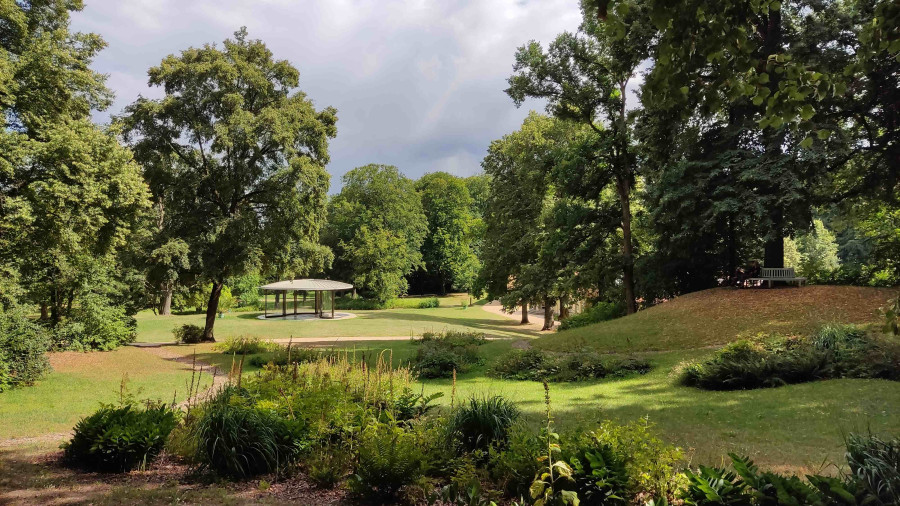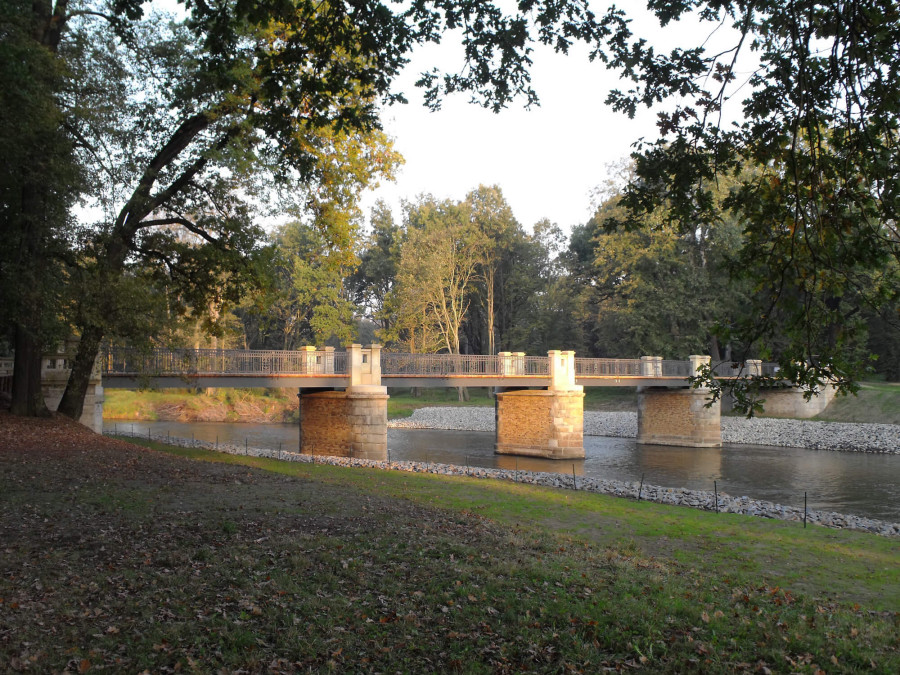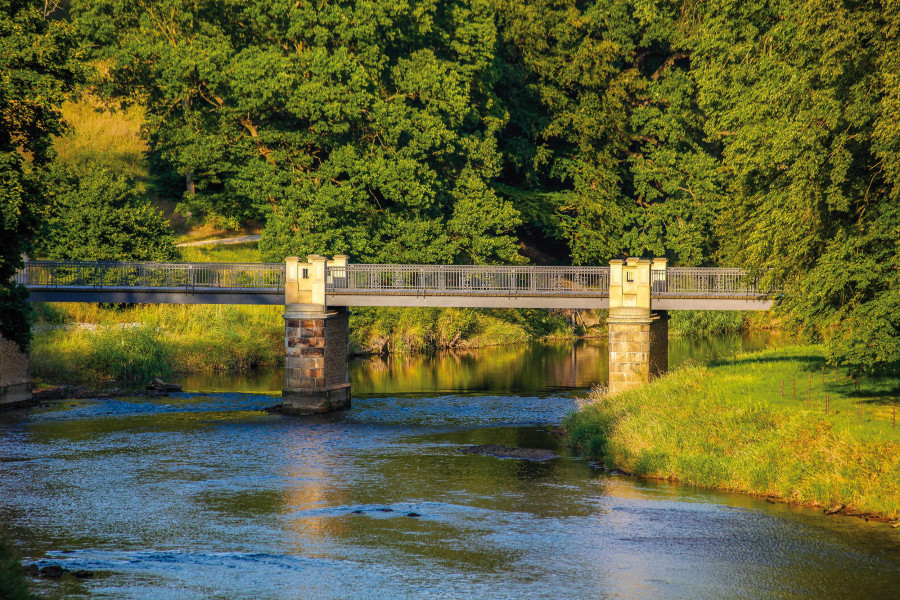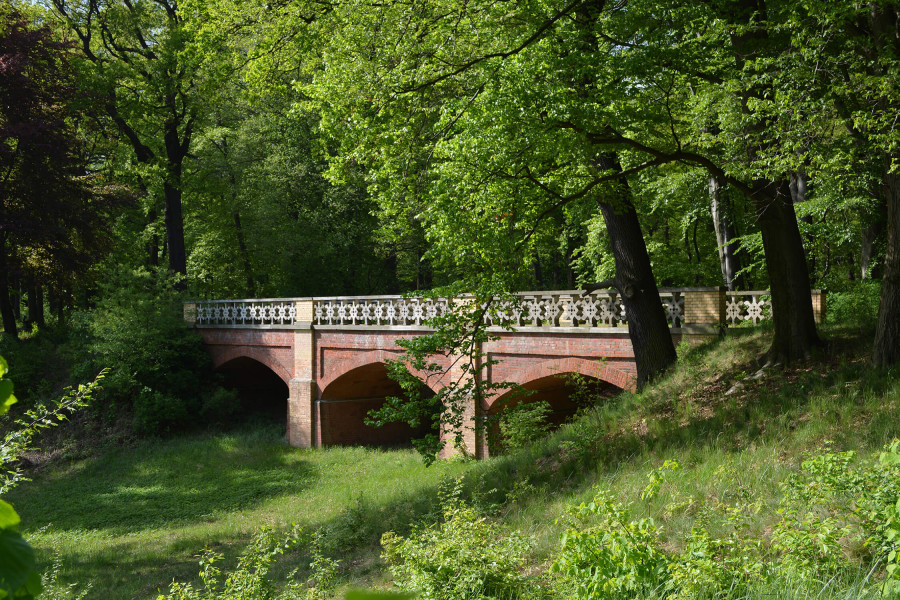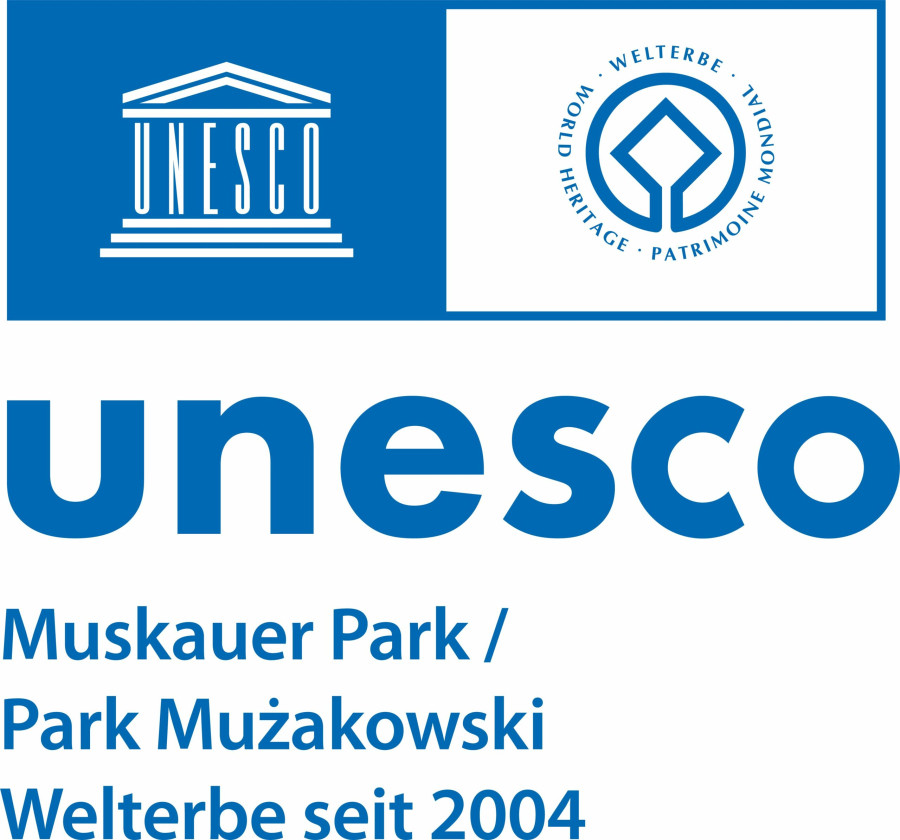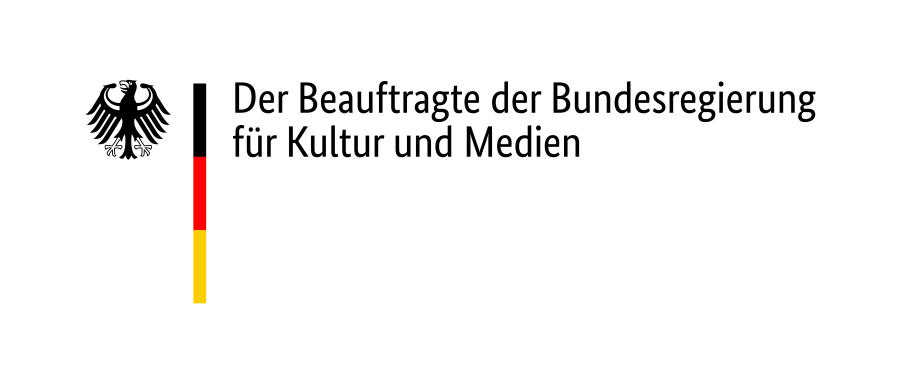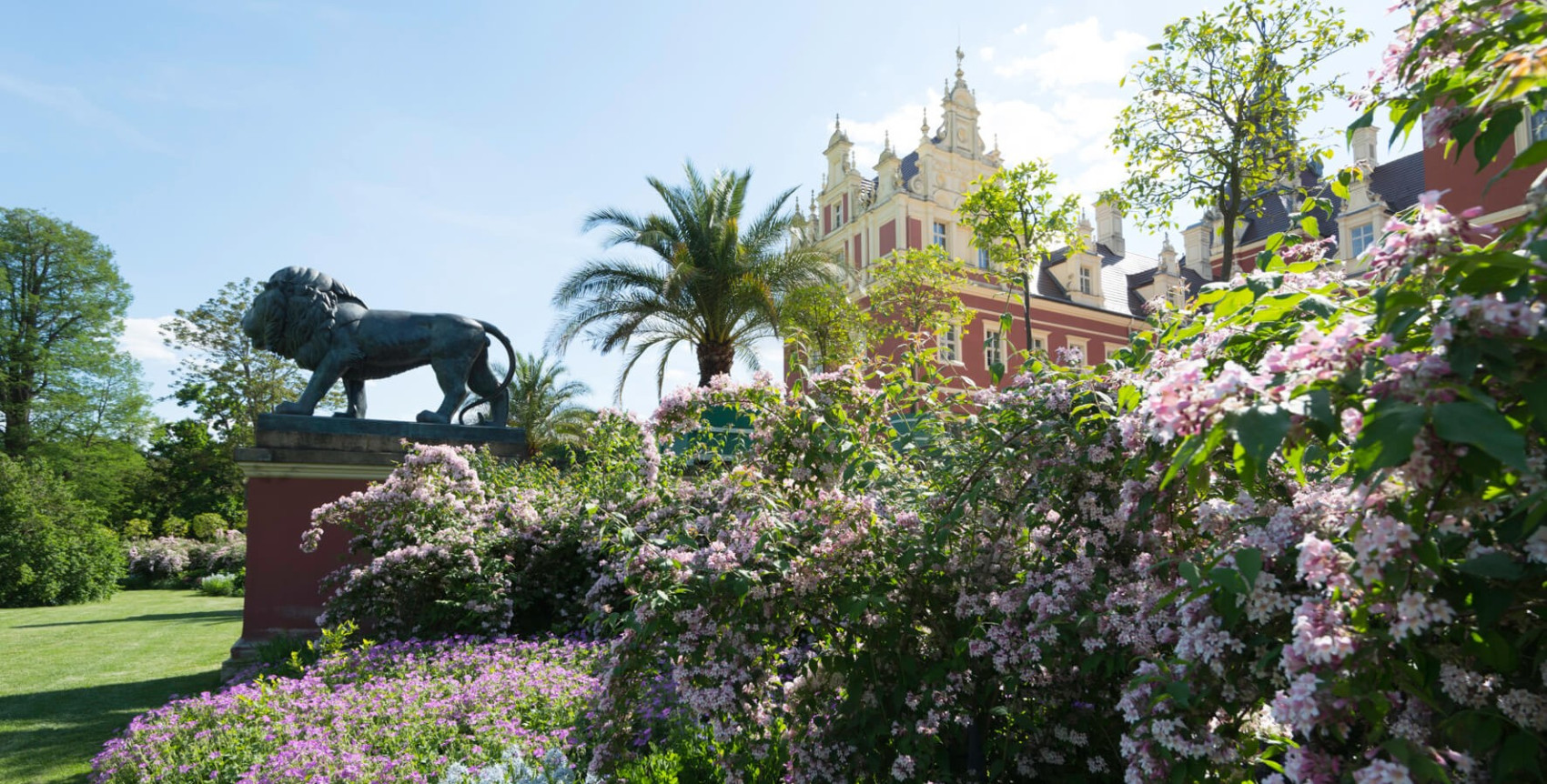
Landscape Art
The highest degree of landscape gardening is only achieved where it appears to have become nature again, but in its most noble form.Pückler-Muskau, Hints on Landscape Gardening, 1834
Garden art, nature painting, landscape composition: Pückler’s masterpiece in Bad Muskau and Łęknica has many qualities – and rightly so.
When the prince designed the park on the Neisse, he used stylistic elements from landscape painting. The foreground, middle and background are harmoniously balanced.
Outside the central Pleasure Grounds, which are connected to buildings, the extensive parks blend gracefully into the surrounding landscape. Prince Pückler created the park using only the most original means of landscape design derived from nature, largely retaining the existing topographical situation and subordinating the architecture to the landscape dimension of his work of art.
The park paths act as silent guides and make sure that no attraction is concealed from the visitor. Rather, they guide them almost imperceptibly so that they can constantly perceive new views, visual axes and perspectives in the staging, which is emancipated from the architecture. Pückler created a sensory space in which people consciously or unconsciously feel at ease.
The prince described his visions in the work “Hints on Landscape Gardening”, published in 1834, a much-cited book in garden literature, rich in horticultural aphorisms, artistic pictorial sources and designs as well as precise plans.
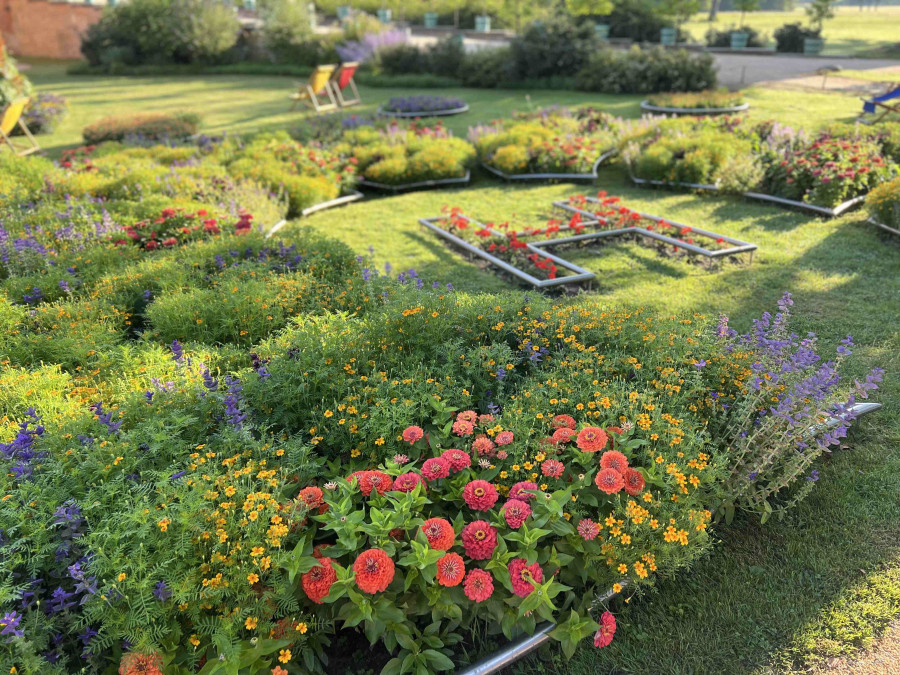

Castle garden
The castle garden surrounds the central areas with the Castle Complex, the flower gardens, the so-called Pleasure Ground and the adjoining park proper up to the River Neisse. The core area of the Muskau Park contains the most important buildings, including the New and Old Castle, the Orangery, the Estate Farm Buildings and the Castle Nursery with the kitchen garden.
Immediately adjacent to the palace and separated from the actual park, Pückler created small, imaginative gardens. There are three different flower gardens in Muskauer Park: the palace garden, the manor garden and the blue garden.
For the transition zone to the park, the prince deliberately stuck to the English term Pleasureground, as the term was difficult to translate into German. “This means a terrain adjoining the house, decorated and fenced in, of far greater extent than gardens tend to have,” Pückler explains in his ‘Hints’, the link between the park and the actual gardens.
The adjoining park is characterized by spacious meadow areas, artificial watercourses and small lakes as well as dramatically elaborate paths.
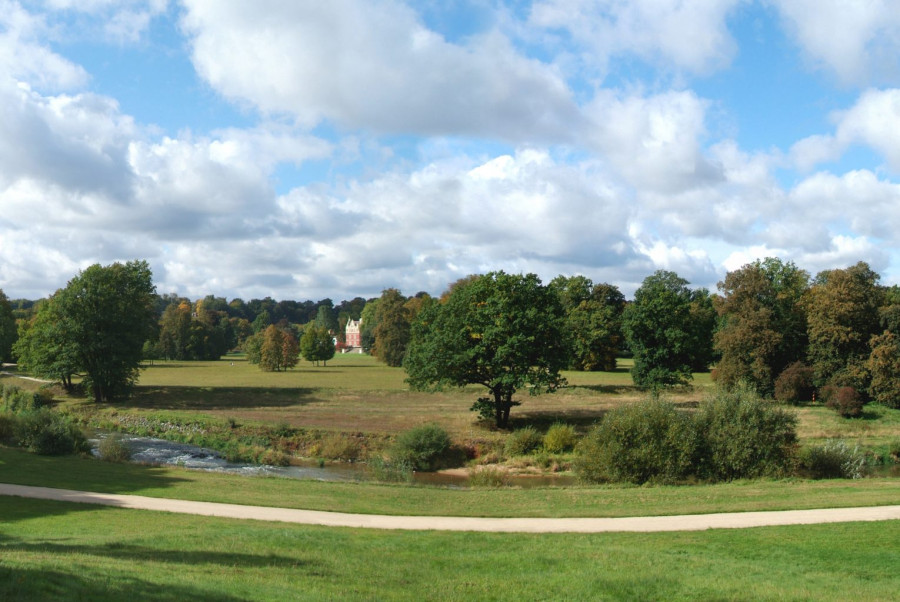
Hill park
“One enters ... a new area on the western hills that run alongside the town, while gradually climbing the steep mountain slope behind it,” writes Pückler in his ‘Hints’ about a narrow strip of the mountain park. Along a panoramic path, there are always picturesque views of the houses of the town of Muskau, the castle and the vast parkland. On the other side, dense grove planting screens off the adjacent Berg district.
By incorporating this slope edge into the design, the town of Muskau is completely enclosed in the park landscape - an idea that the prince brought with him from England and which garden inspector Jacob Heinrich Rehder (1790-1852) implemented in exemplary fashion from 1830.
The panoramic path continues to the former vineyard and the neighboring village of Krauschwitz. Many branching paths, some of them narrow and steep, invite you to explore impressive gorges, picturesque ledges and romantic clearings. The area, shaped by the Ice Age, was an ideal playground for a park maniac like Pückler. The prince founded the spa and bathing tradition in Muskau in one part of the Bergpark. The “Hermannsbad” opened in 1823, but it did not prove to be the goldmine that had been hoped for. Although it was continued under Pückler's successors, it was closed down in 1930 due to unprofitability.
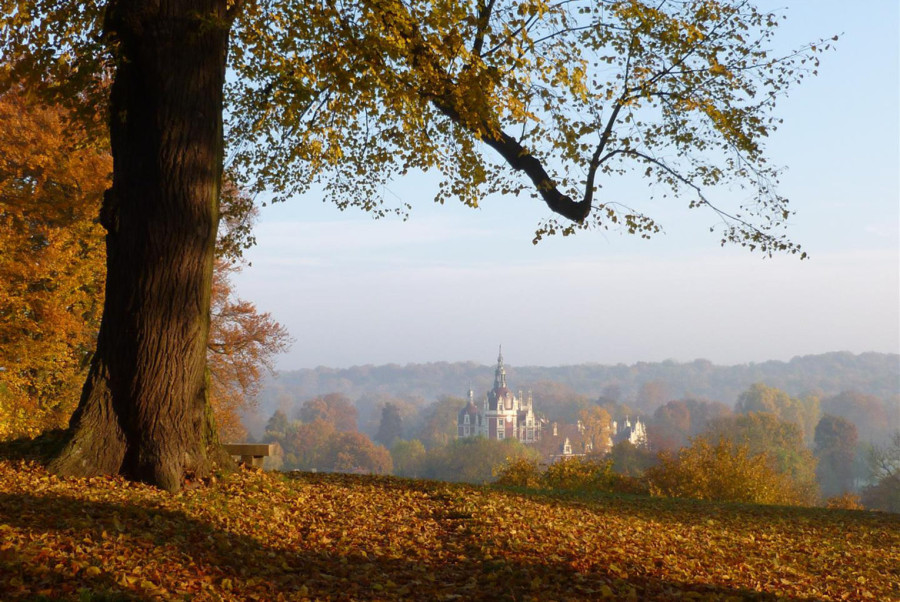
Eastern part of the park
Since 1945, when the border between Germany and Poland was redrawn after the Second World War, Muskauer Park has been a two-state park. The fact that two states meet in the World Heritage Site on the Neisse can be recognized along the river by the border posts in black, red, gold and red and white. However, the double bridge on Jeanette Island and the English Bridge allow walkers to cross from one country to the other without hindrance and explore Pückler's realm as a single entity.
Today, around two thirds of Muskauer Park lies on the Polish side. The eastern part is divided into the terraced park, the upper park and the arboretum, originally a scientific collection of trees and shrubs. The outer park extends as far as the village of Bronowice/Braunsdorf.
Fields interrupted by small lakes and sections of trees allow the huge park to merge gently with the surrounding landscape. Since 1990, the contours of the historical plantings and fascinating visual axes in the Polish section have gradually reappeared thanks to the removal of wild growth.
However, the English House and the Mausoleum have disappeared. Both buildings were demolished or blown up after 1945. Today, the ground plan of their former location is at least hinted at.
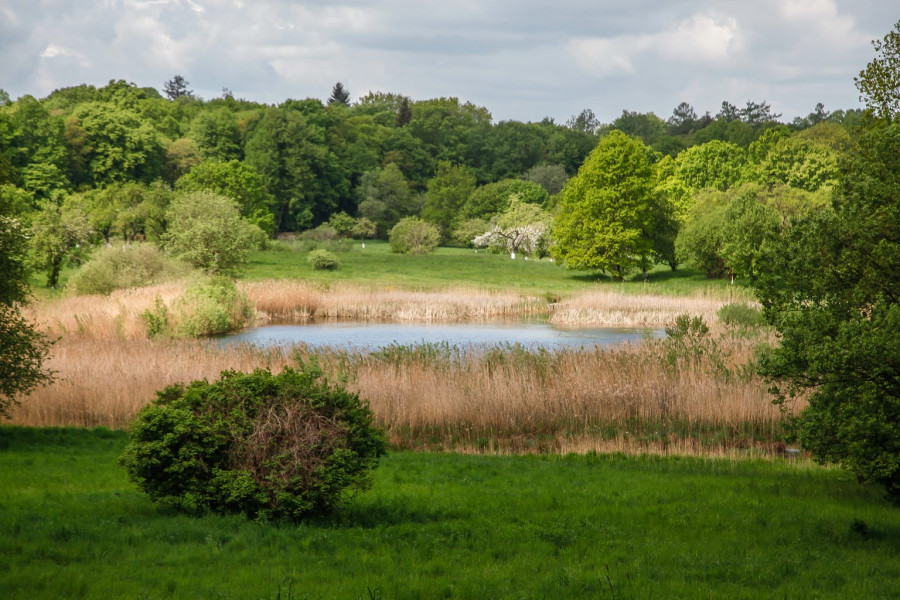
.. if the park is a contracted idealized nature, the garden is an extended dwelling.Pückler-Muskau, Hints on Landscape Gardening, 1834
